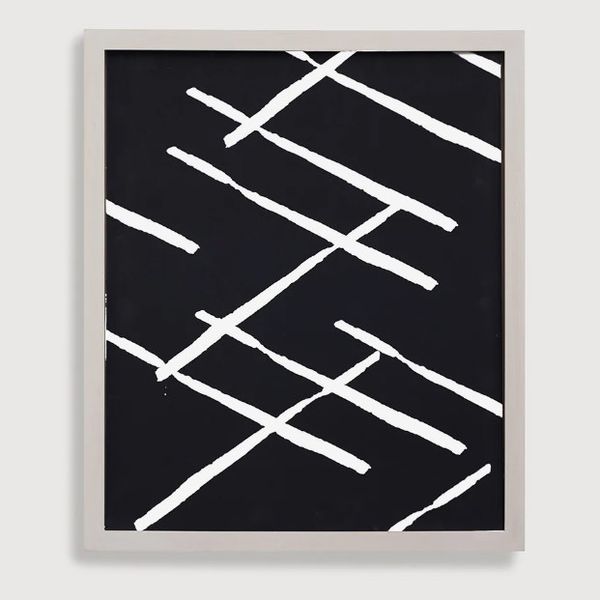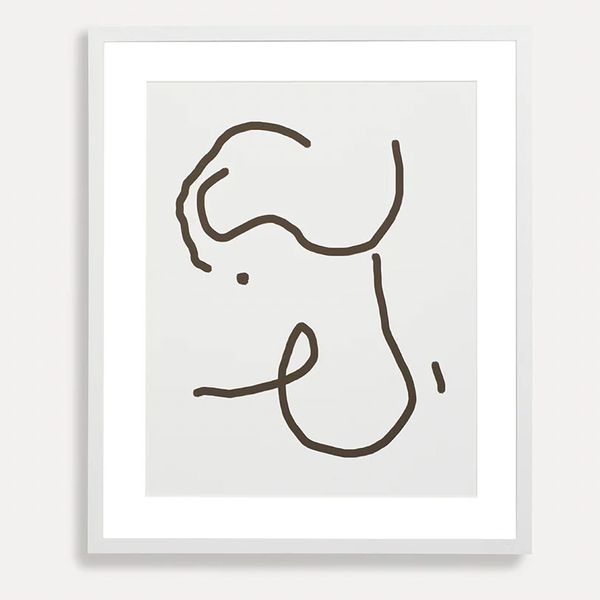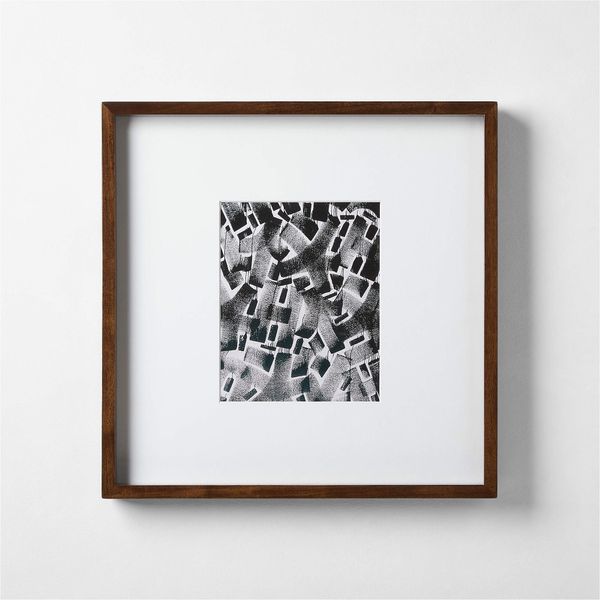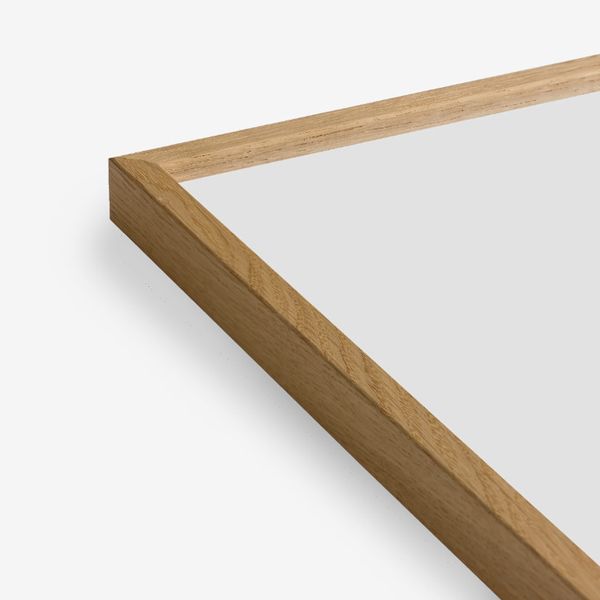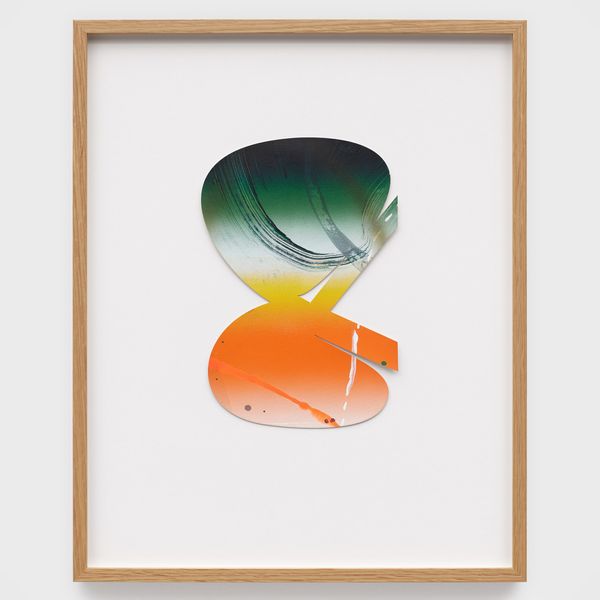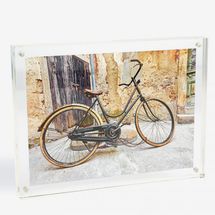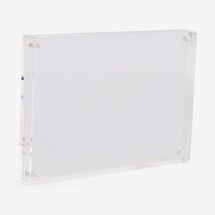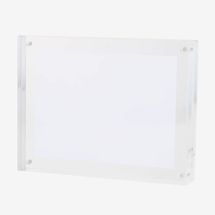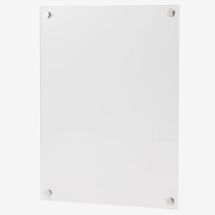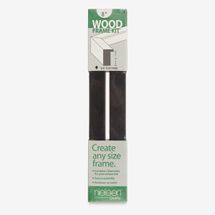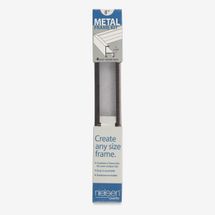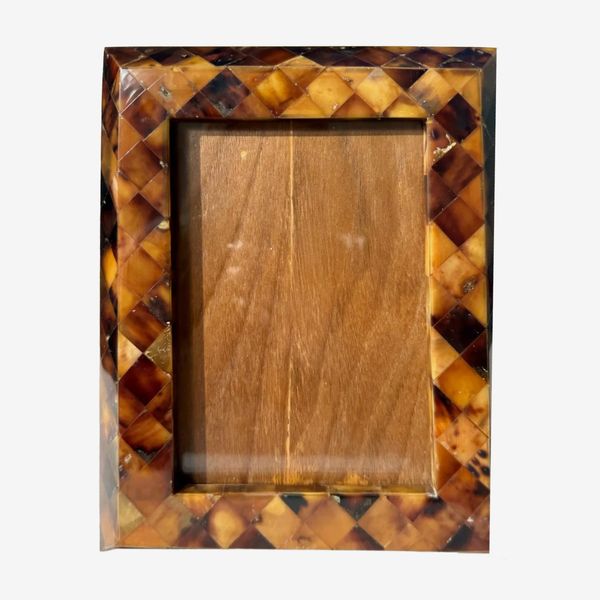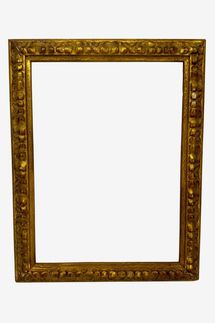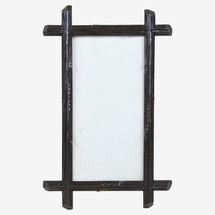
When it comes to art, gallerists have lots of opinions. When it comes to hanging said art, they may even have more. As experts in the world of both art and installation, gallerists know the full range of framing possibilities available — from birch and maple to aluminum and walnut — not to mention that the right frame can make a piece shine (and, in their field, make a sale).
So, when we wanted to track down the best frames out there, it only made sense to consult the experts themselves. Here, you’ll find the frames 13 gallerists use in their own homes — whether for a rarified print or a drawing from their toddler. (Just note: many told us they use custom framing, and we have some tips on that, too — but most of the recommendations here are ones you can assemble and hang yourself).
Their Favorite Wood Frames
Several of the gallerists I spoke to for this story recommended frames from Skyframe, a custom framing company that’s been around for almost 40 years. It’s easy to use: All you have to do is upload a photo of your artwork (so you can see a preview of how it will look in the frame), select a frame, and choose the kind and color of mat you’d like. Francisco Correa Cordero, the founder and director of Lubov Gallery, loves the line’s whitewashed maple frames for drawings and works on paper because it “highlights the handmade aspect” of the pieces, and he has used them for drawings by Chiara Ibrah and Grace Requejo as well as a letterpress print by Shannon Cartier Lucy. Jordan Barse, who owns Theta Gallery in Tribeca, also uses whitewashed maple frames for smaller, multicolored drawings on textured white paper. “The whitewashed maple is a favorite look,” she says, “because it’s got this pinkish-whitish glow that feels cozy and precious, though not too precious.”
For photographic prints, Cordero prefers a white maple frame that will blend with his white walls and let the photo pop. He uses these frames for photographs by Jenna Westra and Paul Mpagi Sepuya.
Depending on the medium, Cordero also uses these black-painted maple frames as well as these dark-walnut frames, in addition to thin, polished aluminum frames, prefabricated aluminum frames, and frames he’s found on the street.
For less-expensive, ready-to-hang frames, Helena Anrather likes CB2, which has a bunch of neutral and crisp-looking options in lots of sizes.
Annie Turpin, a director at Canada gallery, has tried a few different custom frame kits online — which typically come in set sizes with everything you need to hang and mount — but the best luck she’s had has been with the European frame company Paper Collective. This solid-oak frame houses a Francis Picabia poster she got from Moderna Museet in the 50x70 cm size. “It’s lightweight and easy to install, and the wood grain looks pretty nice for a $68 frame,” she says.
If you’re looking to frame posters or prints, take note from Barse, who recommended these affordable German prefabricated frames with a magnetized backing. She recently used frames from Halbe for a show in her gallery of screen prints on paper, and plans to use them when she gets around to framing a Balthus poster she has at home. Their rarity only makes them more coveted — only two framers in the U.S. carry them, one of which is Paradise Framers in Los Angeles.
Their Favorite Clear Frames
For a photograph or a double-sided work, you might want a totally clear frame. Better yet, Plexi frames are often easy to assemble, affordable, and have archival quality, which means they will prevent damage from UV rays, fading, and other factors. Cordero uses frames from Displays2go and ShopPopDisplays to frame drawings, works on paper, and photographs for his clients, and he loves that the frames are “nearly indestructible, very lightweight and affordable, and will protect the longevity of the piece.”
Kate Werble of Kate Werble Gallery is a fan of the style too, because a non-reflective UV-protected plexi frame (like the Displays2go and ShopPopDisplay ones) “keep a work on paper or photograph safe.” Werble’s framing go-to is generally a thin-faced wood frame with a bit of depth, and a float or a mat with museum glass if it’s small. She says that powder-coated black or white metal float frames are also a good option because they hold up well over time.
Polina Berlin, founder of Polina Berlin gallery, is a big fan of Muji’s selection of frames. She loves them for their simplicity and functionality. “I have tons filled with my daughter’s art and family photos,” she says. Berlin also likes this versatile acrylic hanging frame for her child’s artwork.
Their Favorite and Plastic Frames
Although most gallerists tend to use custom frames, Onyedika Chuke, founder of Storage Gallery, recommends this Black Belmont Frame by Studio Décor for photos and posters. “If you’re in a pinch and want something hung, basic black or white frames from Michaels do the trick for short-term hanging,” he says, adding that the craft store can also provide custom mats. Cordero seconds the Michaels recommendation. “They have decent frames that a lot of artists I know use,” he says.
For photos or kids’ drawings, Allegra LaViola of the gallery Sargeant’s Daughters recommends this Ikea style, which starts at just $2 and comes in a cheerful shade of pink. “They look good in a hallway or salon-style hang,” she says.
To create a custom-looking frame without the price tag, Cordero recommends Nielsen Frames, specifically its frame kits in wood or aluminum. The gallerist Bridget Donahue is a fan of Nielsen Frames, too, and says it is her go-to for frames that have crisp, cool metal finishes.
Joseph Ian Henrikson of Anonymous Gallery is also fond of “the cold, industrial feel of a metallic frame” and uses this similar brushed-aluminum one for a series of image stills from Cristine Brache, which gives it a light-box-like quality.
Then There’s the Vintage Frame Route
When in doubt, trust your hunt-and-find abilities. Thrift stores, eBay, and Etsy carry a myriad of treasures that can inspire purchasing more art and vice versa. Alex Tieghi-Walker, who runs TIWA Gallery in Tribeca, mostly buys from thrift stores. “There is always such a great selection because most people see the ugly art and forget to look at the frames,” he says. Tieghi-Walker tends to discard the art that comes with the frames and takes them to his framer in the West Village to clean, re-varnish, and use for his own artwork with new museum-quality glass. Donahue also loves thrifting for frames and recommends MyUnique in the Bronx.
As for aesthetic tips, LaViola says that “very modern spare works can look spectacular in an ornate frame. Flea markets are a good spot for sourcing antique or vintage frames, though often they need repair.” Charlotte Grüssing, gallery manager at The Hole, recommends bringing a tape measure with you when thrifting frames (and same goes for buying one online — be sure to always get the measurements from the seller). “It’s harder to eyeball than you think,” she says. “Have a photo of the work handy so you can check the color and style will mesh … and be sure to have a note on your phone of the artwork sizes you are looking to frame.”
An antique carved-wood frame is a great stand-in for when you want to emulate the look and feel of a family heirloom but seem to have missed the dowry that included it. Claire Vinson of L.A.-based gallery Stroll Garden recommends scouring 1stDibs to find an ornate frame — like the mid-century Italian gold gilt one above, which is similar to the frame that her husband and co-founder, Philip Williams, inherited from his late grandmother. Williams’s frame, made of beautifully carved wood with a barely visible layer of gilding, houses a 1923 work on paper by Louise Nevelson.
Berlin is also a fan of vintage frames, tending to change up her minimalistic, mid-century style from time to time in favor of something quirky and eclectic, like this antique brass-toned metal frame from Chairish. We love the “rustic” frame above for its slightly protruding sides — it would look offbeat in an excellent way paired with a modern print.
The Strategist is designed to surface the most useful, expert recommendations for things to buy across the vast e-commerce landscape. Some of our latest conquests include the best acne treatments, rolling luggage, pillows for side sleepers, natural anxiety remedies, and bath towels. We update links when possible, but note that deals can expire and all prices are subject to change.
